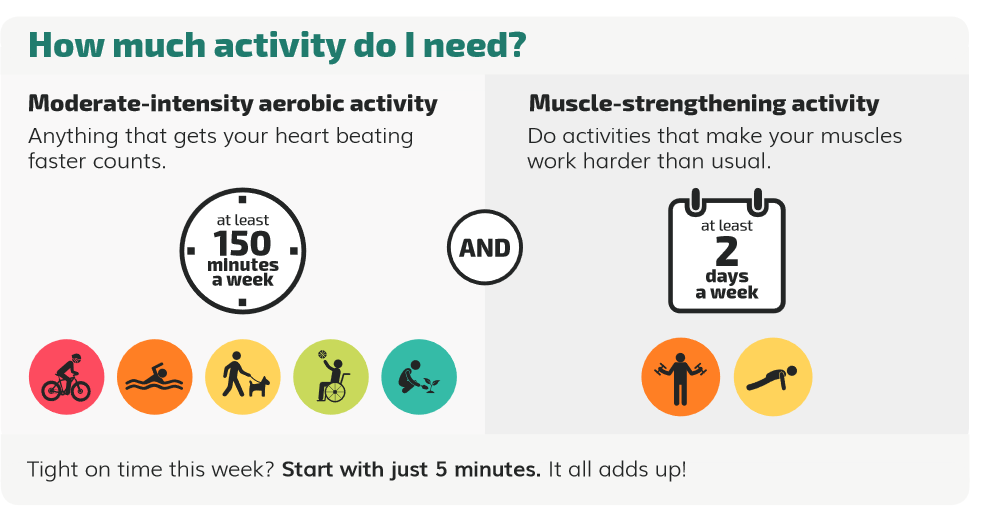A body at rest tends to stay at rest, and a body in motion tends to stay in motion. Newton’s first law of motion should be recited daily!
Although it’s not always apparent, what we do on the outside affects what happens on the inside.
Adopting a moderate- to vigorous-intensity exercise program can help “tune up” the body physically and metabolically. Too little won’t be enough and too much can cause wear, tear, and inflammation. But doing nothing at all is a prescription for metabolic dysfunction.
For starters, inactivity is associated with an increase in central obesity which in turn is associated with increased inflammation, atherosclerosis, endothelial dysfunction, insulin resistance, and dyslipidemia.
Fortunately, exercise can have the opposite effect, reducing abdominal obesity and the inflammatory and cardiometabolic biomarkers associated with it.
The CDC states:
"The evidence is clear—physical activity can make you feel better, function better, and sleep better. Even one session of moderate-to-vigorous physical activity reduces anxiety, and even short bouts of physical activity are beneficial. Being physically active also fosters normal growth and development, improves overall health, and can reduce the risk of various chronic diseases."
As a matter of fact, researchers conclude that inactivity is a significant cause of chronic disease and exercise can be considered primary prevention. Physical inactivity is considered a contributing cause of 35 chronic disorders including:
Bone disorders
Cancer
Cardiovascular disease
Cognitive dysfunction
Connective tissue disorders
Diabetes, type 2 and pre-diabetes
Gastrointestinal disorders
Insulin resistance
Kidney disorders
Metabolic syndrome
Non-alcoholic liver disease
Obesity
Pulmonary disorders
Reproductive disorders
Fortunately, positive effects of exercise can translate into tangible improvement in blood chemistry biomarkers:


CDC. How much physical activity do adults need? [https://health.gov/sites/default/files/2019-11/PAG_MYW_Adult_FS.pdf]
Timing of exercise sessions may have some influence on serum biomarkers as well:
Interval training and moderate-intensity exercise have an anti-inflammatory effect. However, prolonged high-intensity activities like marathon running can increase inflammation and oxidative stress.
Excessive strenuous exercise can even increase biomarkers associated with cardiac injury, pulmonary embolism, or heart failure (e.g., cTnT, hs-cTnT, cTnI, NT-proBNP, BNP, and d-dimer).
Therefore, practitioners must review their patients’ exercise habits during a comprehensive clinical assessment to be sure that strenuous exercise isn’t contributing to abnormal biomarker results.